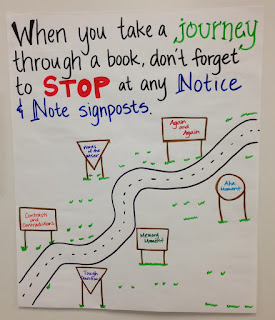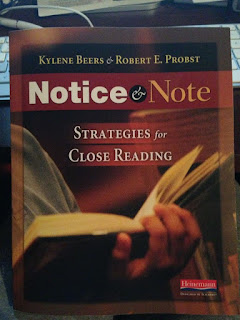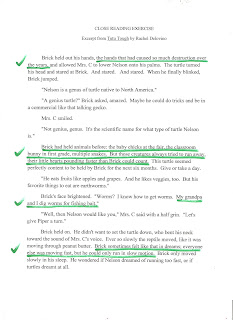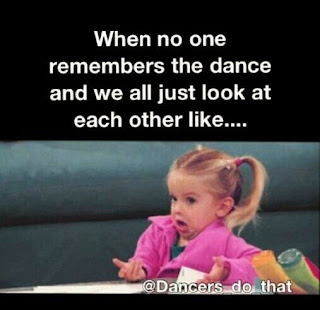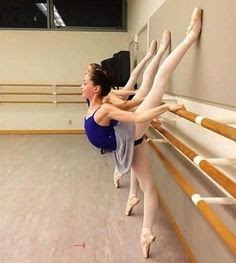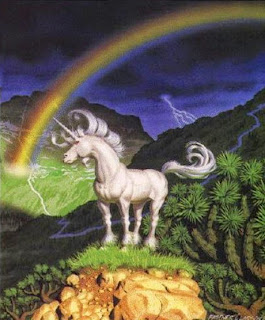Social media. If most teachers and parents don't hate it (for their kids) they, at best, tolerate it. But what if, instead of telling kids to get off the SoMe, we asked them to use it to become better writers?
Teachers and homeschool moms have probably heard of 1) the writing process and 2) the six traits of writing. If you haven't heard of either, don't fret! I've included some articles here and here. As teachers of writing, we know that kids have a hard time with revision. "I'm done!" They say after the first draft. And who can blame them? After sweating over the act of writing ideas on paper, they truly believe that... they are done. How do we get them to return to a piece of writing and revise? The late Donald Graves, professor at the University of New Hampshire said, "I see too many children mired in inane personal narrative accounts, characterless fiction, and poetry with little investment by the author." What is the cure to this ailment? Mr. Graves believed that children needed to "...connect choice with honest struggles and issues." In other words... their world.
We all share the same planet, but all of us have our own world. We perceive things differently. Beauty is in the eye of the beholder, the saying goes. And this couldn't be more true than on the millions of Instagram accounts.
My daughter has 300 posts on Instagram and many followers who "like" her posts. She is eight-years-old. She takes pictures of her toys in her environment (I never allow her to take pictures of herself--no selfies!) She has snapped pics of her Littlest Pet Shop characters on the sharp tipped leaf of a blackberry bush, in the neatly clipped blades of grass, and on the golden petals of a black-eyed Susan. She's also used plain ol' rocks, mulch, and garden stakes to make unique photos. She has zoomed in on her world. Writers should also zoom in on their world. They should observe something interesting and make a note of it.. from their unique point-of-view. I will call this an Instagram post.
An Instagram post can be made at the beginning of a piece of writing to describe the setting. For example, instead of writing, "Once upon a time there was a princess," one would write, "A castle stood tall on a hill with mist swirling around the turrets. From inside one of the ivy covered windows, a princess leaned out."
"That's showing, not telling!" I can almost hear you protesting. "Not an Instagram post!" But remember what Donald Graves said... children need to connect with honest struggles and issues. Their world. The social media is their world, so let's use it to create a common language for teaching writing!
Alternatively, an Instagram post can be made in the middle of a paragraph when a writer needs to slow down and add detail. For example, let's take this little diddy: "Last summer was fun. Last summer we went camping. We went to the Space Needle. Now it's time for school. Darn." And add an Instagram post about camping. "Last summer was fun. We went camping. Our campsite was a rectangle of dirt. Around us, the forest reached up to the sky and blocked the sun. Some trees had even fallen down and lay across each other like giant pick up sticks."
In short, an Instagram post is a way for the student-writer to show us their world. Saying, "insert an Instagram post," when helping a student-writer in the revision process does two things: 1) it gives the teacher language to communicate 'show don't tell' with the student-writer and 2) it allows the social media savvy student-writer to connect with their world.
No longer is social media anathema in the classroom/homeschool environment! Use the Instagram post to make your writing more colorful and meaningful.
Happy writing,
Rachel
Writing in Layers... Because Layers are Better
I dance I trip I stumble I write...
Friday, August 12, 2016
Monday, August 1, 2016
RECESS for Teachers: A Lesson for Close Reading Using Tutu Tough
Scribbling pencils scratch.
Tenor voices chat. Until the weird buzzing bell shouts, "Scat!"
It's time for recess.
Hi. Now that the kids are gone... Excuse me one moment. "No, Marissa, I don't need help this recess. Go play." That's Marissa, my little helper. I'll tell you her story another time, because right now I want to blog to the teachers and homeschoolers about my book and CLOSE reading with it!
So, if you are new to my blog, first of all WELCOME! Secondly, the book I mentioned above is a novel I wrote for kids ages 8-12 that is both humorous and full of heart, titled Tutu Tough. It's actually not published yet, so you have to wait. Aw, darn! I know. But when it is published, I want you to know exactly how you can use it with CLOSE reading exercises.
What is CLOSE reading? Not to be confused with cloze reading exercises, where a word is left out of a passage and the reader is asked to insert the word that best fits the meaning of the passage, CLOSE reading is an analytical study of a passage of text.
Other people have expertly written on Close Reading and Beers and Probst's six signposts, and some articles can be found here and here. For today's purposes, all you need to know is this: You have a text waiting to be read and a reader eager to read it (I hope!) Since Close Reading requires marking up the text, start by making a copy of a passage (which could be a page or maybe two depending on your needs.) I know some teachers (and homeschoolers) who will type out the text in large font. Whichever you choose is ok. The key is to get messy with the words on the page and in a sense to interrogate the author and/or characters. Oh boy. Now I'm in the hot seat! I can feel that one bare light bulb swinging above me, as I sit in a cold cell waiting for the detectives to question me. Gulp.
Let's look at one passage from my book, Tutu Tough.
Yikes! That's tiny. Here's the text:
Brick held out his hands, the hands that had caused
so much destruction over the years, and allowed Mrs. C to lower Nelson onto his
palms. The turtle turned his head and
stared at Brick. And stared. And stared.
When he finally blinked, Brick jumped.
"Nelson
is a genus of turtle native to North America."
"A
genius turtle?" Brick asked, amazed.
Maybe he could do tricks and be in a commercial like that talking
gecko.
Mrs. C
smiled.
"Not
genius, genus. It's the scientific name
for what type of turtle Nelson is."
Brick had
held animals before: the baby chicks at the fair, the classroom bunny in first
grade, multiple snakes. But those
creatures always tried to run away, their little hearts pounding faster than
Brick could count. This turtle seemed
perfectly content to be held by Brick for the next six months. Give or take a day.
"He
eats fruits like apples and grapes. And
he likes veggies, too. But his favorite
things to eat are earthworms."
Brick's
face brightened. "Worms? I know how to get worms. My grandpa and I dig worms for fishing
bait."
"Well,
then Nelson would like you," Mrs. C said with a half grin. "Let's give Piper a turn."
Brick held
on. He didn't want to set the turtle down,
who bent his neck toward the sound of Mrs. C's voice. Ever so slowly the reptile moved, like it was
moving through peanut butter. Brick
sometimes felt like that in dreams; everyone else was moving fast, but he could
only run in slow motion. Brick only
moved slowly in his sleep. He wondered
if Nelson dreamed of running too fast, or if turtles dreamt at all.
The lesson I'm going to introduce you to today is the Memory Moment. Beers and Probst describe it as the point "...in the novel where a character remembers something from the past." (Notice & Note: Strategies for Close Reading, p. 176) They also state that "...When students learn to be alert to these moments, they quickly see that memories often play an important role in the book, telling us much about the character and his or her background that we wouldn't otherwise know (Notice & Note: Strategies for Close Reading, p. 176.) And, further, that as students think about the Memory Moment, "...they are making predictions about characters and theme." (Notice & Note: Strategies for Close Reading, p. 176)
Can you feel my excitement?????
Yes! Yes! That's what we are doing as authors! We are purposely dropping little crumbs about the character's past to tell you what their motivation is!
All right, back to the lesson. You have the text. Now you need a TEXT-DEPENDENT QUESTION. Duh duh DUUUUHHHHH! Goes the foreboding music.
Listen, a Text-Dependent Question is just a question that asks the reader to go back to the text to justify their answer. For this lesson, the question is: "Why might this memory be important?"
Seems simple, right?
It is. If you follow these steps:
1. Start with a definition of the Notice and Note signpost Memory Moment. Say, "It helps you understand why characters do what they do." Beers and Probst state, "...A Memory Moment is the point in the book when the writer interrupts what's happening in the story to show us the main character as he or she remembers something important." (p. 177)
2. Read the text once for understanding. Read aloud to the student/s the first time.
3. Say, "When I see a memory interrupt the flow of the story, I have to ask myself, Why might this memory be important?"
4. Reread the text. This time, the student/s read silently to themselves. Ask them to put a check mark where they think a Memory Moment appears.
I found four Memory Moments in the excerpt from Tutu Tough. Because the font is so tiny, I will retype them here, but that's not necessary when doing the lesson.
1. Brick held out his hands, the hands that had caused so much destruction over the years...
2. Brick had held animals before: the baby chicks at the fair, the classroom bunny in first grade, multiple snakes. But those creatures always tried to run away, their little hears pounding faster than Brick could count...
3. "My grandpa and I dig worms for fishing bait."
4. Brick sometimes felt like that in dreams; everyone else was moving fast, but he could only run in slow motion.
5. Now we discuss! If students can pair up, great. If not, have a teacher/student discussion. Go back to the Memory Moment signpost question: Why might this memory be important? Make sure the student/s recognize why these are Memory Moments (the action is interrupted by a memory.) Here are some suggestions:
MM #1 Why is this important? Because Brick's hands have caused destruction in the past and the reader is worried his hands will hurt the turtle Mrs. C has brought into class.
MM #2 Why is this important? Brick remembers holding animals in the past that tried to run away from him, but this turtle is different. Is it because the turtle is different or because Brick has changed?
MM #3 Why is this important? Brick recalls that he and his grandpa dig for worms. He is trying to show that he knows how to take care of a turtle and also that he spends time with his grandpa, like other kids might. He's not so different, after all.
MM #4 Why is this important? Brick remembers everyone moving fast in his dreams and he is moving slowly. He is always doing the opposite of what other people are doing and not fitting in.
6. End with reviewing why Memory Moments are important in a story, and if you are feeling brave you could point out that they often turn into Again and Again signposts. Remind your student/s when they find a Memory Moment they should think about why it is important to the character.
And that's it! That's an example of a close reading exercise using Notice & Note signposts.
Tuesday, April 5, 2016
I Have An Agent!
I fully realize the title of this blog post is very on-the-nose, but what else could I title it? I Have Found Someone Who Believes In My Work and My Feet Have Stopped Touching The Ground When I Walk Because I'm Elated? Hmmm, yes that would be a contender. But the truth is I'm just too excited to beat-around-the-bush. I HAVE AN AGENT! Her name is Terrie Wolf and she has her own literary agency based in Colorado--AKA Literary Management.
What do I like about Terrie? So many things, but I think the number one quality that drew me to her was how positive she is. And it isn't a rose-colored glasses type of attitude where she chooses not to see the bad and ugly... it's a way of living that says: When Life Knocks You Down, Calmly Get Back Up and Say, "Is That All You Got?" It is tenacity. Perseverance. Just not giving up. Ever. And not allowing oneself to be jaded by the jaded world. Yes, I admire that about Terrie. In just the short amount of time I've known her, I've witnessed this to be true.
The other thing that I really like about Terrie is she believes in my work! Terrie has said that my manuscript is "smart" and "needs to be read." Thank you! My work is a 40,000 word manuscript titled Tutu Tough and is a book for the middle grades that addresses bullying in all of its forms. The story follows three characters, 12-year-old tough guy Brick, 11-year-old loner Travis, and 12-year-old Piper Palatine, a ballerina who says what she thinks and is unpopular because of it. Everything is going fine, and by fine I mean Brick is pushing Travis into blackberry bushes and throwing his backpack on the roof of the school among other things, when Brick's mom puts him in ballet as punishment. She thinks she can humiliate him into being "good." Instead, Brick discovers that he loves ballet! He marvels that he can tell his body what to do instead of the other way around. But when Travis finds out and hatches a plan to use that information to exact revenge, the reader will be left wondering, "Who is the real bully?" I can tell you after years of drafting and revising this manuscript I have fallen in love with these characters. They are real people to me! And finding Terrie, who loves them just as much as I do was well worth the wait.
In short, I look forward to a long career with Terrie Wolf at AKA Literary Management. I can tell she will be my cheerleader but always give it to me straight. She will remain positive in the face of adversity. And what more could an author ask for? We have already laughed together. My hope is we will someday soon celebrate together. And to all of the authors out there who are being brave today: Hurray! Open that website. Research that agent. Attend that conference. Send that query. Be brave. Because your Terrie is just around the corner, too. I guarantee it.
Happy writing,
Rachel
What do I like about Terrie? So many things, but I think the number one quality that drew me to her was how positive she is. And it isn't a rose-colored glasses type of attitude where she chooses not to see the bad and ugly... it's a way of living that says: When Life Knocks You Down, Calmly Get Back Up and Say, "Is That All You Got?" It is tenacity. Perseverance. Just not giving up. Ever. And not allowing oneself to be jaded by the jaded world. Yes, I admire that about Terrie. In just the short amount of time I've known her, I've witnessed this to be true.
The other thing that I really like about Terrie is she believes in my work! Terrie has said that my manuscript is "smart" and "needs to be read." Thank you! My work is a 40,000 word manuscript titled Tutu Tough and is a book for the middle grades that addresses bullying in all of its forms. The story follows three characters, 12-year-old tough guy Brick, 11-year-old loner Travis, and 12-year-old Piper Palatine, a ballerina who says what she thinks and is unpopular because of it. Everything is going fine, and by fine I mean Brick is pushing Travis into blackberry bushes and throwing his backpack on the roof of the school among other things, when Brick's mom puts him in ballet as punishment. She thinks she can humiliate him into being "good." Instead, Brick discovers that he loves ballet! He marvels that he can tell his body what to do instead of the other way around. But when Travis finds out and hatches a plan to use that information to exact revenge, the reader will be left wondering, "Who is the real bully?" I can tell you after years of drafting and revising this manuscript I have fallen in love with these characters. They are real people to me! And finding Terrie, who loves them just as much as I do was well worth the wait.
In short, I look forward to a long career with Terrie Wolf at AKA Literary Management. I can tell she will be my cheerleader but always give it to me straight. She will remain positive in the face of adversity. And what more could an author ask for? We have already laughed together. My hope is we will someday soon celebrate together. And to all of the authors out there who are being brave today: Hurray! Open that website. Research that agent. Attend that conference. Send that query. Be brave. Because your Terrie is just around the corner, too. I guarantee it.
Happy writing,
Rachel
Saturday, July 4, 2015
My Writing Process
Okay, so here is a little revelation for today. Are you ready for it? It will blow your socks off. Or it might even blow your mind, it's so illuminating. You're ready, you think. Well, all right then. Here it is: in order to have a writing process, you must write.
Did you get that?
In order to have a writing PROCESS...
You must WRITE.
And even more than that... you must complete every stage of the process MANY, MANY times before you know what you are doing. Forget about transcending, or being good even... you must do that to be READABLE.
I am a writer who loves first drafts. I have boxes and boxes of snippets and paragraphs and pages of opening lines dripping with promise. I've written first drafts all of my life, and up until my time in college and at Nickelodeon I didn't think I needed to do much more than that.
Oh, how wrong I was.
At Nickelodeon I learned about a lovely little thing called notes. Taking notes sounds like a simple endeavor. You sit. You listen. You write down what the executive says. You change your script. Simple, right?
No.
For starters, no one ever has the answer for you. They tend to do the most frustrating thing: ask questions. What is the inciting incident? Where is the act break? Can you punch it up? And you are lucky if you get specific questions like that. Often, it's a question disguised as criticism: This doesn't work; this falls flat; dialogue too on-the-nose. Then as a writer it's your job to figure out what the hidden question is. All while keeping your cool and not taking anything personally.
And it's easy to take the notes personally. Unless you see them as what they are: part of the PROCESS.
That is why I say I love notes. I don't love the criticism or the confusion of trying to figure out exactly what question is hiding behind the criticism... But I'm grateful for notes because they propel me toward the finish line.
I've written about my process before, but I am finding that the more I write, the more process I have. So I'm adding to it. Here it is:
Discovery
Lump of Clay
Shaping
New Lump of Clay
Transcending
???
The question marks are for Publishing. I haven't gotten there yet. I don't even know if I've touched the finish line of New Lump of Clay... and Transcending is my ultimate goal.
So, you see I still have a ways to go in this marathon. But I'm here, putting one foot in front of the other, writing one word at a time. Don't give up on me, you mysterious readers. I haven't.
Happy writing,
Rachel
Did you get that?
In order to have a writing PROCESS...
You must WRITE.
And even more than that... you must complete every stage of the process MANY, MANY times before you know what you are doing. Forget about transcending, or being good even... you must do that to be READABLE.
I am a writer who loves first drafts. I have boxes and boxes of snippets and paragraphs and pages of opening lines dripping with promise. I've written first drafts all of my life, and up until my time in college and at Nickelodeon I didn't think I needed to do much more than that.
Oh, how wrong I was.
At Nickelodeon I learned about a lovely little thing called notes. Taking notes sounds like a simple endeavor. You sit. You listen. You write down what the executive says. You change your script. Simple, right?
No.
For starters, no one ever has the answer for you. They tend to do the most frustrating thing: ask questions. What is the inciting incident? Where is the act break? Can you punch it up? And you are lucky if you get specific questions like that. Often, it's a question disguised as criticism: This doesn't work; this falls flat; dialogue too on-the-nose. Then as a writer it's your job to figure out what the hidden question is. All while keeping your cool and not taking anything personally.
And it's easy to take the notes personally. Unless you see them as what they are: part of the PROCESS.
That is why I say I love notes. I don't love the criticism or the confusion of trying to figure out exactly what question is hiding behind the criticism... But I'm grateful for notes because they propel me toward the finish line.
I've written about my process before, but I am finding that the more I write, the more process I have. So I'm adding to it. Here it is:
Discovery
Lump of Clay
Shaping
New Lump of Clay
Transcending
???
The question marks are for Publishing. I haven't gotten there yet. I don't even know if I've touched the finish line of New Lump of Clay... and Transcending is my ultimate goal.
So, you see I still have a ways to go in this marathon. But I'm here, putting one foot in front of the other, writing one word at a time. Don't give up on me, you mysterious readers. I haven't.
Happy writing,
Rachel
Wednesday, June 24, 2015
On Being Brave
Today
I am being brave
Enough to search one agent
to click on one author's link
to read
Their
work
I am being brave
Enough to search one agent
to click on one author's link
to read
Their
work
Tuesday, May 19, 2015
Meme (s) for the Day
So, these memes are appropriate for me this week for two reasons: the first reason is I have been working hard to be in an adult lyrical recital dance. Yes, adults do recital dances, too :) But not this adult, this year, apparently. Because when I went to slide into the splits (like these beautiful dancers but on the floor) my hamstring went POP! and I am now doing six weeks of physical therapy for a ruptured hamstring instead of being in the dance. The bright side? Well, for a split second (pun intended) after my hamstring popped I was on the floor with one leg in front of me and the other stretched out behind me and I thought: "Wow! I'm so flexible!" Not.
Wednesday, May 13, 2015
Why I Say I'm a Unicorn...
I often refer to myself as a unicorn, even though I do not write fantasy novels. Why? Well, let me tell you.
A unicorn is me being myself, but better. There is a quote I like. It goes like this: "You are braver than you believe, stronger than you seem and smarter than you think." Author: Christopher Robin
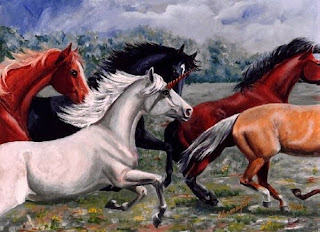
Another reason I call myself a unicorn is because unicorns can be alone without being lonely. Look at this girl. She is alone in a wasteland. No one to talk to for miles. But she has something zinging around in her brain that conjures up rainbows and lightning and fearsome skies and bright light all at the same time! It's a story! And it's happening while she is alone, but not lonely.

Unicorns have AMAZING friends. And that is me. I have the most kind, supportive, and real laughing-out-loud friends. These are people who have something uniquely magical themselves. And I am eternally grateful for these people in my life.
And finally, unicorns dance. Wherever they are. But hopefully in a field of flowers.
That, my friends, is why I am a unicorn. I hope you can be a unicorn, too :)
Happy writing,
Rachel
Subscribe to:
Posts (Atom)
